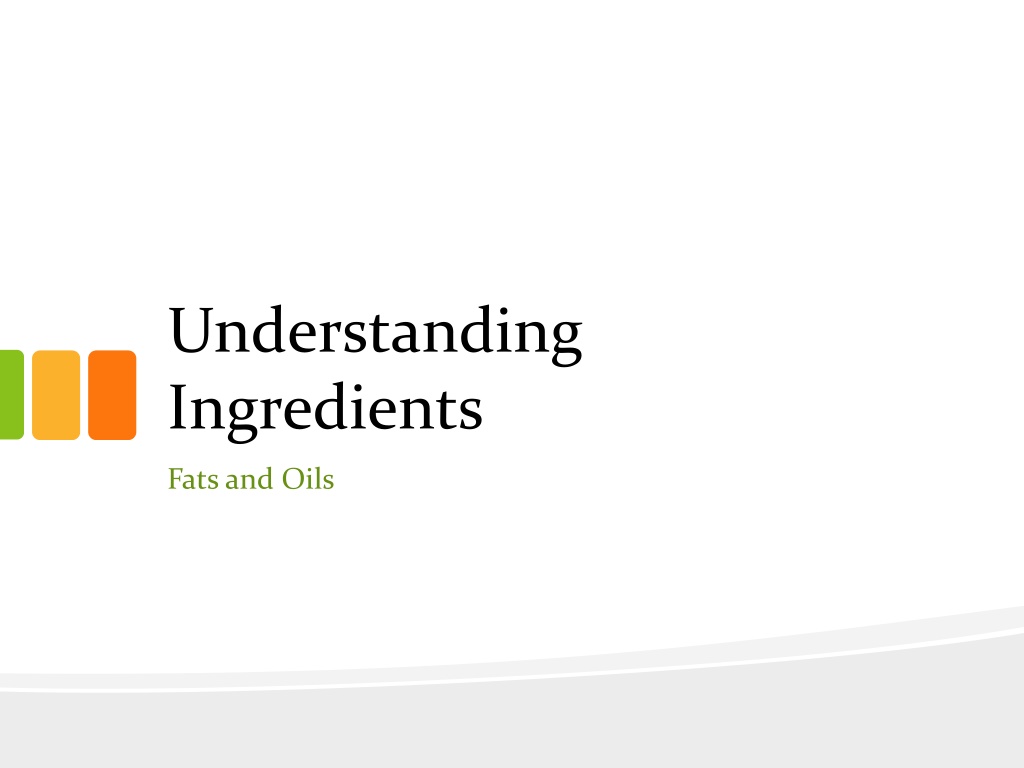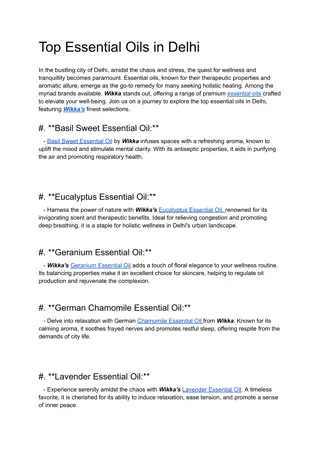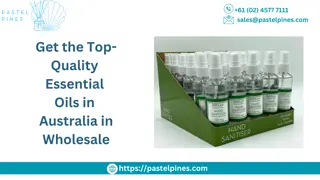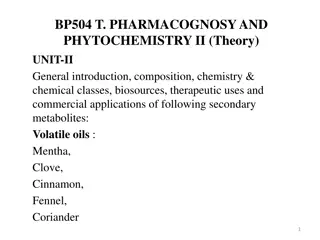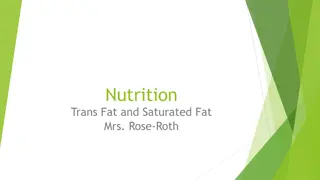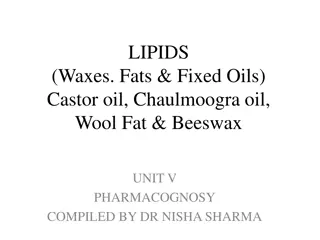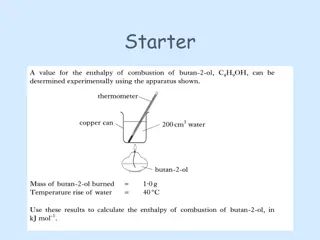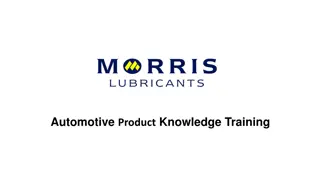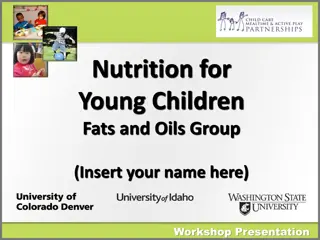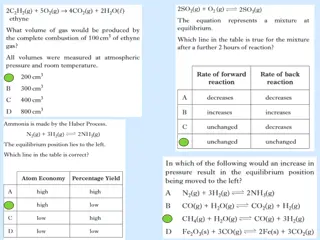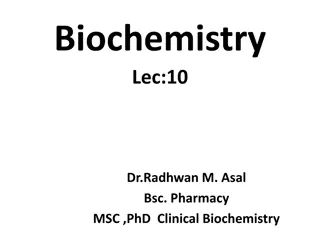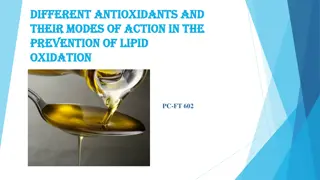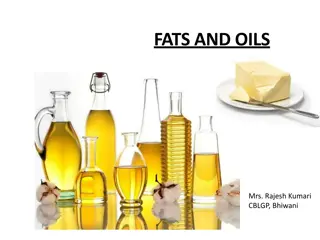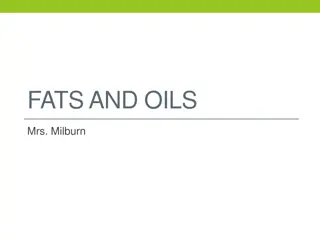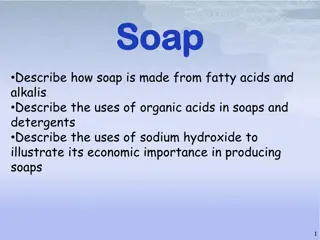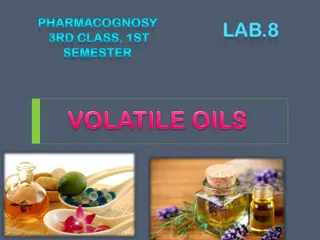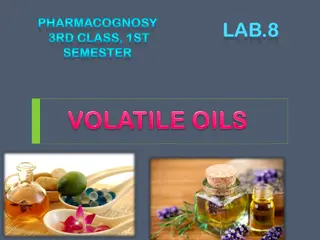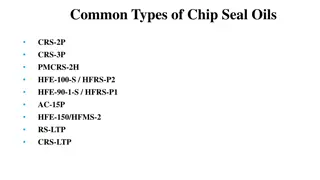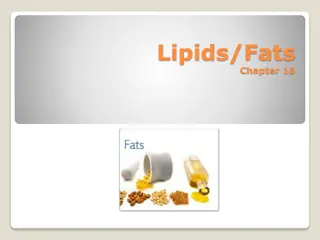Understanding Fats and Oils: Types, Structures, and Nutritional Value
Explore the types of fats and oils used in cooking, including animal fats and plant oils. Learn about the nutritive value, storage options, and cooking uses of fats and oils. Discover categories like rendered fat and hydrogenated oil, and understand their impact on health. Dive into the world of fats and oils to enhance your cooking knowledge and dietary awareness.
Download Presentation

Please find below an Image/Link to download the presentation.
The content on the website is provided AS IS for your information and personal use only. It may not be sold, licensed, or shared on other websites without obtaining consent from the author. Download presentation by click this link. If you encounter any issues during the download, it is possible that the publisher has removed the file from their server.
E N D
Presentation Transcript
Understanding Ingredients Fats and Oils
Topics Types of Fats and Oils Structures of Fats and Oils Nutritive Value of Fats and Oils Choice and Storage of Fats and Oils Uses of Fats and Oils in Cooking / Diet Food and Nutrition Labelling of Fats and Oils 2
Types of Fats and Oils Fats and oils in cooking can be grouped into two categories: animal fats and plant oils Fats from animal source, e.g. lard, butter, margarine Oil from plant source, e.g. peanut oil, coconut oil, olive oil, corn oil, canola oil, sesame oil 4
Types of Fats and Oils Some fats are visible, some fats are invisible Visible fat, e.g. chicken skin, chicken feet, beef steak, salmon Invisible fat, e.g. deep-fried food, sausage, cream cake, biscuit with cream filling, pastry, chips, peanut 5
Other categories of fats and oils Rendered fat Rendered fat is the solid, usable fat derived from animal fat after it is heated and freed from connective tissue Food manufacturers render hog fat and process it to become lard (43% saturated fatty acids), or cattle fat to become tallow (48% saturated fatty acids) Both lard and tallow are used in food manufactures as ingredients because of their textural and flavour characteristics Lard is used in pastry to produce a highly desirable, flaky pie crust 6
Other categories of fats and oils Hydrogenated oil Hydrogenation is the process of adding hydrogen to unsaturated fatty acids to reduce the number of double bonds. Hydrogenation serves two purposes: To convert liquid oils to semisolid To increase the stability and shelf life of the fat Hydrogenation of unsaturated fatty acid is adding hydrogen gas to oil with catalyst, temperature and pressure control As the reaction progresses, trans fatty acids are produced gradually Trans fatty acids increase the melting point of the fat or oil and create a more solid product Studies have shown that intake of trans fatty acids is associated with increased risk of coronary artery disease Examples of hydrogenated oil: shortening and margarine 7
Other categories of fats and oils SOLUTION Animal fat is too hard to spread Liquid oil is too soft to spread Spreadable hydrogen- ated oil Add hydrogen into liquid oil 8
Other categories of fats and oils Margarine Fat content is the same as butter Produced from a range of vegetable fats and oils Used for a variety of food products to: assist aerating enhance flavour retain moisture in food create the crumbly and flaky texture of pastry Contains vitamin E Fortified margarine also contains vitamins A and D 9
Structures of Fats and Oils Lipid is the term that includes fats and oils Fats Oils Animal source Plant source High proportion of saturated fatty acid High proportion of polyunsaturated fatty acid Higher melting point Lower melting point Solid at room temperature (exception is salmon fish oil) Liquid at room temperature (exceptions are palm oil, coconut oil) Saturated fatty acids are precursors for making cholesterol in our body, they may increase risk of cardiovascular diseases Monounsaturated fatty acids are found to help reduce blood cholesterol, it may be helpful to prevent cardiovascular diseases 11
Structures of Fats and Oils Fats and oils are triglycerides, the major constituent of lipids In general, lipid includes the triglycerides, phospholipids and sterols 12
Structures of Fats and Oils Glycerides Include monoglycerides, diglycerides, and triglycerides The first two act as emulsifiers in foods More than 95% of fatty substance in food is triglycerides Fatty acid chain Glycerol Triglyceride 13
Structures of Fats and Oils Phospholipids The structure of phospholipids is similar to triglycerides but contain only two fatty acids It also contains lecithin, the same component that is found in egg yolk The primary source of lecithin is soybean A phospholipid forms a bridge between fat and water, therefore emulsification can be seen between two immiscible substances 14
Structures of Fats and Oils Sterols Sterols are round in shape Cholesterol is the primary animal sterol Cholesterol is vital to animal cell membrane structure and function as a precursor to fat-soluble vitamins and steroid hormones 15
Structures of Fats and Oils Fatty acids Fatty acids are long hydrocarbon chains with a methyl group (CH3) at one end of the chain and a carboxylic acid group (COOH) at the other Most natural fatty acids contain from 4 to 24 carbon atoms and most contain an even number of carbon atoms in the chain Animal fats typically have 18 carbons in the fatty acid chain These long chains are made of various fatty acids and are chiefly saturated 16
Structures of Fats and Oils Fatty acids (cont d) In saturated fatty acids, there is only single carbon-to- carbon bonds, they have a linear shape Generally, saturated fatty acids are solid at room temperature and have low melting points 17
Structures of Fats and Oils Comparison of composition of dietary fat (Source: Canola Council of Canada) 100% 90% 80% 70% 60% 50% 40% 30% 20% 10% 0% Saturated Fat Polyunsaturated Fat Alpha Linolenic Monounsaturated Fat 18
Structures of Fats and Oils Fatty acids (cont d) Fatty acids may also be unsaturated, containing one or more carbon-to-carbon double bonds Monounsaturated fatty acids contain only one double bond, such as oleic acid Polyunsaturated fatty acids contain two or more double bonds, such as linoleic and linolenic acids Generally, unsaturated fatty acids are liquid at room temperature and have low melting points 19
Structures of Fats and Oils Fatty acids (cont d) The double bonds in fatty acids occur in either cis or the trans configuration H H \ / C = C / \ H H \ / C = C / \ H Cis - the hydrogen atoms attached to the carbon atoms of the double bond are located on the same side of the double bond Trans - the hydrogen atoms are located on opposite sides of the double bond, across from one another 20
Nutritive Value of Fats and Oils 21
Nutritive Value of Fats and Oils Fat is a nutrient yielding high amount of energy The amount of energy provided by fats doubles the amount of energy provided by carbohydrates or protein of the same weight People enjoy fat in the diet due to its flavour mouthfeel, palatability, texture, and aroma 22
Choice and Storage of Fats and Oils 23
Choice and Storage of Fats and Oils Choose those that are well-packed and check the expiry date when buying Fats should be covered and stored in a refrigerator away from food with strong smells Oils should be stored at room temperature in airtight containers away from sunlight 24
Uses of Fats and Oils in Cooking / Diet 25
Uses of Fats and Oils in Cooking / Diet Function of fats and oils to human body: Provide energy to support daily activities and other physical activities as well as to keep the body warm Help to absorb fat-soluble vitamins (A, D, E and K) Precursor for synthesizing hormones to support normal function of the body 26
Uses of Fats and Oils in Cooking / Diet Functions of fats and oils in food preparation: Add or modify flavour, texture Aerate (leaven) batters and doughs Contribute flakiness Contribute tenderness Emulsify Transfer heat, such as in frying Prevent sticking 27
Food and Nutrition Labelling of Fats and Oils 28
Food and Nutrition Labelling of Fats and Oils Labelling of fats and oils is controlled in Hong Kong legislation: List of ingredients Pre-packaged food shall be legibly marked or labelled with a list of ingredients List of allergenic substance If fats and oils contains allergenic substance, such as cereals containing gluten, peanuts, fish, soya beans, and tree nuts, the name shall be specified in the list of ingredients Appropriate durability indication Indication of best before or use by date 29
Food and Nutrition Labelling of Fats and Oils Labelling of fats and oils is controlled in Hong Kong legislation: Nutrition labelling Pre-packaged food shall be marked or labelled with its energy value and nutrient content Total fat, saturated fatty acids, and trans fatty acids are the nutrients associated with fats and oils that should be labelled on the package Nutrition claim If any nutrition claim is made on the food label or in any advertisement, the nutrient in concern shall be marked or labelled in the nutrition labelling 30
Food and Nutrition Labelling of Fats and Oils Legislative requirement on composition of milk and milk products Milk and milk products Legal requirement on fat percentage Lard Not more than 1% of substances other than hog fat Not more than 1% of water Butter Shall contain not less than 80% of milk fat, not more than 16% of water and not more than 4% of salt (sodium chloride) Margarine Shall contain neither more than 16% moisture nor more than 10% butter fat. 31
References Canola Council of Canada Hong Kong Legislation, Food and Drugs (Composition and Labelling) Regulations., Cap. 132W. Vickie A. Vaclavik, Elizabeth W. Christian. Essentials of food science. New York, NY: Springer, c2008. 32
